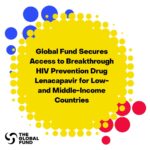By Dareen Keana | boibizi@gmail.com
With the frequently rising prices of food items like maize flour, bread, fish, beef, milk and cooking
fat, it is increasingly becoming harder for Kenyans to afford three meals a day. High-protein foods
like chicken and fish are becoming an expensive delicacy for many people. In a bid to find
alternatives, enterprising and innovative individuals are now turning to insects as food.
According to Dr Saliou Niassy, head of the International Centre of Insect Physiology and Ecology
(icipe) Technology Transfer Unit in the Environmental Health Theme Team, insect consumption in
Africa is not a new trend. Some of the insects commonly eaten as food include white ants, or
kumbikumbi, popular in the Western Kenya region. icipe, which collaborates with more than 300
partners worldwide, plays a vital role in entomological or insect research in the East and Central
Africa region as well as the globe. Icipe estimates indicate that more than 1,900 edible insect species
are consumed by over two billion people. At least 500 of these species are found and eaten across
Africa. “For instance, one kilogram of termites costs Ksh1,275 ($11) in Kenya. The number of insect
eaters is expected to grow to nine billion by 2050,” says Dr Niassy. Insect foods are higher in protein
content compared to conventional protein foods such as fish, beans and soya. Chicken and pigs
prefer insect-based feed compared to fish or soya meal.
The insect foods are quite affordable, and a stable source of income in sustainable settings. “A kilo of
r.differens or long horned grasshoppers costs around Ksh300 ($2.6),” Dr Niassy says. Dr Niassy says
the time is ripe for the continent to exploit its rich treasure of biodiversity to provide much needed
resources to its people, including food, with a special focus on conservation to maintain sustainable
use. Icipe estimates that Africa’s food import bill is expected to rise to $110 billion by 2050, with its
forest cover shrinking to less than 600 million hectares over the same period due to growing
demand for firewood and conversion of forests to farmland. During the same period, the continent’s
population, which was estimated at 1.3 billion in 2020, is expected to grow to 2.5 billion.
According to the estimates, the populations of more than half of Africa’s 54 nations will double or
grow even more by 2050 as a result of high fertility and improving mortality rates. At least one in
every four people, or 25 per cent of the world’s population will be living in Africa, compared to just
one in 10, or less than 10 per cent who were living here in 1950. This growth rate represents more
than double the current population on the continent, and will present an additional food security
challenge to the region.
Our solution to the expanded population’s demand for food, Dr Niassy says, is a change in the way
we eat by using sustainable and cost effective ecosystem services. The scientist believes food
security challenges can be alleviated by greater investment in the cultivation of insects for use in
African diets. “More than ever, it is vital for us to implement the adoption of a sustainable and
circular approach to ecosystem services for better livelihoods, food and nutritional security. One of
the ways to achieve this goal is switching to cheaper and more nutritious insect foods,” says the
expert.
Dr Julius Ecuru, the Manager of BioInnovate Africa, which is an icipe subsidy, describes the firm’s
approach to societal challenges as driven by the need to wisely use the resources provided by
nature. “BioInnovate uses science biodiversity to provide practical, affordable solutions to pressing
societal challenges,” says Dr Ecuru. As part of its work, BioInnovate is currently pursuing the black
soldier fly project that uses bio waste to feed the adult insects. Black fly larvae are used as nutritious
food rich in Omega 3 proteins. BioInnovate is working on the project with partners in Kenya, Ethiopia
and Tanzania. Another ongoing project aims to produce jet fuel using the ‘somaize’ or sorghum and
maize hybrid extracts.
The crop is used as food, while its syrup can be used to produce bioethanol that can be used as
aviation fuel and livestock feed. BioInnovate is collaborating with partners in Uganda, Kenya and
Ethiopia to implement the project. Dr Ecuru says biodiversity conservation and biomass stewardship
are required at the genetic, species and ecosystem levels, including soil and watershed
management. Pursuing the objective with the involvement of local communities in the target areas
will not only conserve the environment, but also create employment.
“Let us provide alternative livelihoods for communities that are biomass custodians, especially fuel
sources, farm inputs and markets, value chains and jobs,” he says. “Using science and technology,
we can optimise production and reclaim degraded environments,” adds the scientist. Dr Ecuru sees
an enduring potential for even more significant and game changing biodiversitybased innovations in
our economy. He also emphasises that further research and multisectoral collaborations are
required to actualise this vision.






